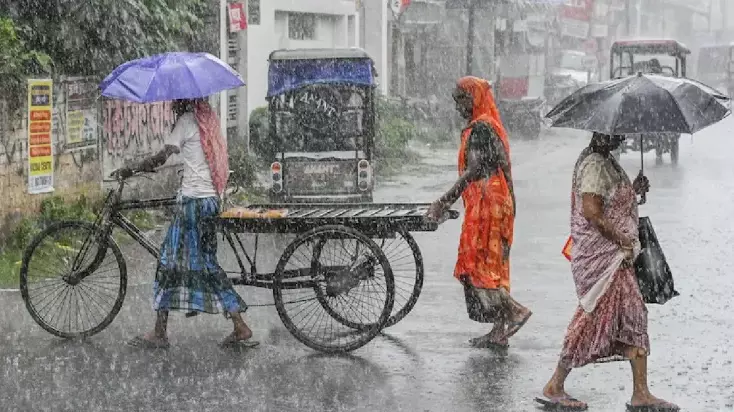India to Get Above-normal Rainfall This Monsoon: IMD
Rain-deficient parts of Marathwada and adjoining Telangana are expected to witness above-normal showers

New Delhi: India is expected to get above-normal rainfall in the upcoming southwest monsoon season that is scheduled to set in on June 1, the India Meteorological Department (IMD) said on Tuesday, raising hopes for a bountiful harvest.
The long-range monsoon forecast of the IMD had good news for Telangana: Rain-deficient parts of Marathwada and adjoining Telangana are expected to witness above-normal showers. However, large parts of Tamil Nadu and the northeastern region were likely to get below-normal rainfall.
“Cumulative rainfall is estimated at 105 per cent (with an error of 5 per cent) of the long-period average of 87 cm,” said M. Ravichandran, secretary in the Earth sciences ministry. He told a press conference that of all the global factors that influence monsoon rainfall over India, two would have a neutral impact, and one a positive impact this year.
“There is a 30 per cent chance of normal rainfall, a 33 per cent chance of above-normal rainfall, and a 26 per cent chance of excess precipitation during the monsoon season,” IMD Director General Mrityunjay Mohapatra said.
According to the IMD, rainfall between 96 per cent and 104 per cent of a 50-year average of 87 cm is considered 'normal'.
Parts of the country are already battling extreme heat, and a significantly high number of heatwave days are expected in the April to June period. This could strain power grids and result in water shortages.
However, normal cumulative rainfall does not guarantee uniform temporal and spatial distribution of rain across the country, with climate change further increasing the variability of the rain-bearing system.
Climate scientists say the number of rainy days is declining, while heavy rain events (more rain over a short period) are increasing, leading to frequent droughts and floods.
Three large-scale climatic phenomena are considered for forecasting monsoon season rainfall.
The first is ENSO -- a climate pattern characterised by fluctuations in sea surface temperatures in the tropical Pacific Ocean, which in turn affects global weather patterns.
The second is the Indian Ocean Dipole, which occurs due to differential warming of the western and eastern sides of the equatorial Indian Ocean while the third is the snow cover over the northern Himalayas and the Eurasian landmass, which also impacts the Indian monsoon through differential heating of the landmass.
ENSO-neutral conditions and neutral Indian Ocean Dipole conditions are predicted during the season. Also, the snow cover in the Northern Hemisphere and Eurasia is low, Mohapatra said.

